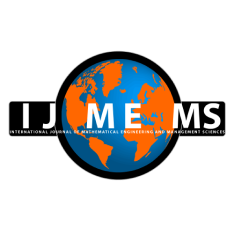Rajendra S. Chaudhari
Department of Mechanical Engineering, Sardar Patel College of Engineering, Mumbai, MS, India.
S. K. Mahajan
Directorate of Technical Education, MS, India.
Santosh B. Rane
Department of Mechanical Engineering, Sardar Patel College of Engineering, Mumbai, MS, India.
Rajeev Agrawal
Department of Mechanical Engineering, Malaviya National Institute of Technology Jaipur, Rajasthan, India.
DOI https://doi.org/10.33889/IJMEMS.2022.7.6.052
Abstract
Climate change poses a real risk, as does a shortage of resources to accommodate the world's rising population. Every nation is trying to produce maximum without caring for the environment. As a result, the circular economy (CE) is critical to the long-term sustainability of society, business and the environment. Government and policymakers are forcing industries and organizations to adopt or establish CE in their businesses to protect the environment. However, the concept of CE is unclear, and there are various hurdles and barriers to adopting a CE in industries and organizations. For a sustainable environment, CE barrier management plays a crucial role. This paper aims to explore and prioritize barriers to establishing a CE. A detailed methodological literature review is carried out to explore the twenty-nine barriers in CE. The various barriers to CE are prioritized using the Multi-criteria decision-making methods Order of Preference by Similarity to Ideal Solution (TOPSIS). Based on the TOPSIS barrier of increased emission and pollution while recycling was found to be a top rank and the barrier of tedious environmental regulations and lack of government support was found to be at the lowest rank. The top priorities are the barriers to increasing emission and pollution while recycling, radically changing production, and lack of public participation in using recycled products. The Blockchain-IoT architecture and strategies are developed to mitigate all these barriers. As in CE, resources are not ending as these are recyclables since products are made to last several life cycles. Product's lifespans are extended by maintaining, repairing and re-manufacture to reduce carbon footprints in the environment. This barrier ranking will help supply chain professionals and business executives analyze the failure to implement CE in industries. Strategies and architecture based on blockchain-IoT will also help in mitigating the barrier in CE. This study will give new dimensions for the adaption of CE in industries. CE will create sustainable ecosystems for soil, air and water. These sustainable ecosystems provide a long and healthy life for all living things on this planet.
Keywords- Circular economy (CE), Circularchain (CSC), Internet of things (IoT), Blockchain, TOPSIS.
Citation
Chaudhari, R. S. Mahajan, S. K. Rane, S. B. & Agrawal, R. (2022). Modeling Barriers in Circular Economy Using TOPSIS: Perspective of Environmental Sustainability & Blockchain-IoT Technology. International Journal of Mathematical, Engineering and Management Sciences, 7(6), 820-843. https://doi.org/10.33889/IJMEMS.2022.7.6.052.



